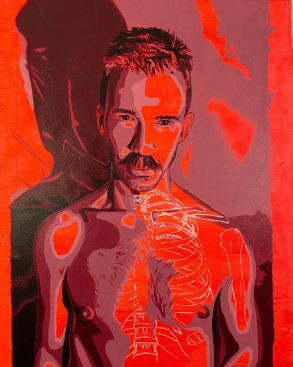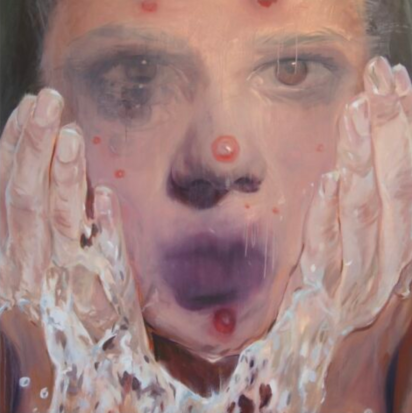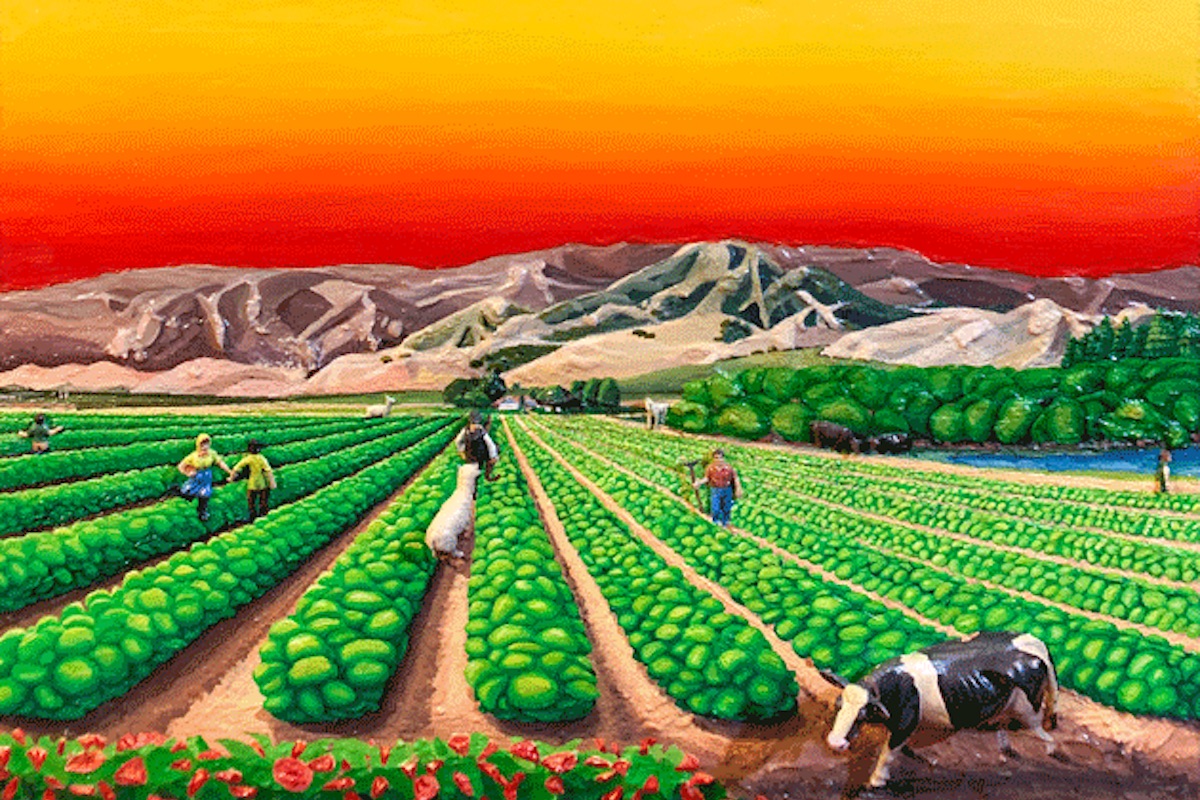Unending, on view at the Museum of Contemporary Art Santa Barbara (MCASB) through Sunday, September 12, expresses the thoughts and emotions of the participating artists about the state of contemporary culture, and those feelings are often derived from their personal struggles.

Though largely of unconventional inspiration, some works draw from more traditional forms, such as the landscape painting “American Pastoral Past Times” by Thomas Stoeckinger. This picture heavily exaggerates certain features, such as the vividly red sky, breaking the mold of typically unobtrusive landscape paintings and underscoring how shifting emphasis and focus can reflect the artist’s values. On a shelf next to the painting, Stoeckinger exhibits a series of statuettes titled “Duck-Rabbit-Person” that represent a diversity of human perspectives drawn from personal experiences; each statuette can be viewed either innocuously, as an animal in profile, or more confrontationally, as a human in a submissive posture.
To the right of the gallery entrance, “Such Strange Weather” by Marshall Sharpe shows the artist’s parents in a sitting room. On the surface level, the painting reflects a sense of familial longing, but Sharpe imbues the work with other meanings as well. For all the homeliness of the scene, it is set in a rarely used formal room with the furniture arranged artificially, demonstrating the often-superfluous nature of some living areas. In another acrylic painting titled “Broken,” Sharpe depicts himself after injuring his collarbone. “Broken” uses reddish hues to evoke his physical trauma and casts a penetrating light that seems to expose the outlines of his injured rib cage. The injury, Sharpe explained, gave him another sense of longing, this time for good health.
This edition of ON Culture was originally emailed to subscribers on August 13, 2024. To receive Leslie Dinaberg’s arts newsletter in your inbox on Fridays, sign up at independent.com/newsletters.
Megan Koth’s art focuses on personal grooming and the anxieties born from imperfect skin. Like Sharpe, Koth draws on personal experience — in her case, an internal abscess. She uses the theme of imperfect skin as the basis for various artistic applications. Her painting “Ablution” mirrors the pose typical of models in skin-care advertisements — splashing water on one’s face in profile — but the inclusion of bright, prominent pustules on the face underscores how advertising varnishes over the reality of human skin conditions. In another series of paintings called “Dermascapes,” skin conditions are incorporated into landscape paintings, and their distinguishing features read as rugged terrain or natural landmarks.

After passing through a charred door, visitors to David Wesley White’s portion of Unending see “White Inferno, The Burning of Washington,” a model of the White House’s damaged shell in the aftermath of the British attack in 1814. White confirms that this subject intentionally parallels the damage wrought by pro-Trump insurrectionists on January 6, 2021. Though most of his fire is trained on the former president, White also scorns current neoliberal discourse, representing its inanity by highlighting similarities between such discourse and Republican anti-New Deal propaganda in the form of two posters shaped like dollar bills and titled “Altered Anti-Populist Propaganda.”
A chastity belt made of paper cell phones stands on a pedestal in “Rose Gold I-phone Chastity Belt Pareidolia” by Serene Blumenthal. The work represents the tendency of popular media to parrot “bad history” for dramatic effect — such as the falsehood that chastity belts were commonly used in medieval times. In another three-dimensional work, Blumenthal shapes a series of clay masks into different expressions. In her video “Trust Clinic,” these masks influence her choreography much in the way one’s personality can be consumed by a projected facade.
Kio Griffith’s “Silence Moves Faster” installation takes up a whole room. Various materials and objects in this elaborate construction can be played with a violin bow or by hand to produce all manner of sounds. A text score is provided for those who can sight-read. For Griffith, even silent moments in this period have been ringing with tinnitus, and thus his installation explores the COVID time-space distortion, acoustics, and the distance between the object and the visitor.
Support the Santa Barbara Independent through a long-term or a single contribution.





You must be logged in to post a comment.